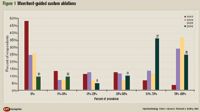Article
Epi-LASIK, advanced surface ablation, wavefront-guided procedures on rise
The American Society of Cataract and Refractive Surgery's Refractive Surgery Survey reached the 10-year mark in 2006. The results show an increase in epi-LASIK, advanced surface ablation, and wavefront-guided procedures and continued surprises regarding some standard-of-care issues.

Key Points
San Diego-The 2006 American Society of Cataract and Refractive Surgery (ASCRS) Refractive Surgery Survey has yielded some interesting results regarding practice patterns and the adoption of new techniques and technologies, said Richard J. Duffey, MD, here at the annual meeting of ASCRS.

"Although the participation is relatively low and that raises concerns about bias, the response rate has been stable throughout the history of the survey, which suggests that the data can be used as we intended to analyze trends," said Dr. Duffey, a private practitioner in Mobile, AL.

"About 25% of surgeons participating in the 2005 survey indicated they were not performing any custom procedures. This year, that percentage dropped to just 10%, whereas 37% of surgeons said that custom ablations accounted for 51% to 75% of their procedures, and 25% were using a wavefront-guided approach in 76% to 100% of their cases," said Dr. Duffey.

LASIK remained the preferred procedure for a 45-year-old with +3.00 D of hyperopia, but the proportion of surgeons selecting that approach had decreased markedly from 2 years earlier. At the same time, the proportion of surgeons reporting that they would perform refractive lens exchange (RLE) had crept up to 22% in 2006, whereas 23% of the respondents said they would wait for a better alternative.





